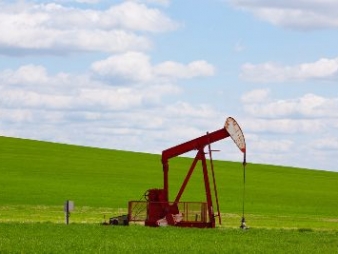Oil and gas leases typically include language indicating that the lease will remain in effect so long as the leased property continues to produce oil and gas in paying quantities.
Ohio courts have long held that a well is producing in paying quantities if the revenues from the well exceed the expenses involved in maintaining the well. Unless production from the leased property has ceased in its entirety, mineral owners face an inherent disadvantage in deciding whether to argue that wells on the property are no longer producing in paying quantities and the lease has therefore terminated. Namely, the producer is the only one in possession of the records necessary to determine the revenues and expenses related to the wells on the property.
A recent decision by the Seventh District Court of Appeals highlights another significant disadvantage that mineral owners may face when challenging the continued validity of a lease based upon a lack of production. In Burkhart Family Trust v. Antero Resources Corporation, the mineral owner filed suit seeking a declaration that the lease had terminated due to a lack of production. The producer admitted that he did not keep a record of his expenses and was, therefore, unable to produce records during the discovery process which would allow the mineral owner to determine from reviewing the producer’s documentation whether the expenses exceeded the revenues. The producer testified at trial that his expenses were minimal that he was making a significant profit from the property, but the trial court found that he was not a credible witness.
The trial court ruled in favor of the mineral owner and found that the lease had terminated based, at least in part, on the producer’s failure to maintain records regarding expenses. The Court of Appeals reversed, noting that there was no evidence in the record that expenses exceeded revenues. The Court of Appeals acknowledged that the lack of records regarding expenses was “troubling.” Nevertheless, the Court noted that plaintiffs normally bear the burden of proving that they are entitled to relief. If no evidence is introduced to prove a fact necessary to obtain relief, plaintiffs will lose by default because the burden was on them to find the evidence necessary to support their claims.
This ruling creates obvious problems for mineral owners. Not only will mineral owners likely not have the documents they need to determine whether a well is producing in paying quantities when deciding whether to file a lawsuit, they now face the possibility of not being able to obtain such documents even after the lawsuit is filed. Producers now have an incentive not to track expenses relating to wells, or at least not in such a way that expenses can be associated with any particular well.
This does not create an insurmountable hurdle for mineral owners, but one likely solution will often increase the costs of bringing a lawsuit. Specifically, mineral owners can hire an expert to testify as to what the average costs of operating the type of well in question would be. Assuming that the average cost of operating the well is higher than the revenue generated, a mineral owner should be able to prevail. In fact, this approach to a producer who claims a lack of records could turn a disadvantage into an advantage. Faced with an expert conclusion that a well is not producing in paying quantities, many producers will likely claim that their expenses were less than the average identified by the expert. However, they will already have boxed themselves into a corner by admitting that they do not have any records to support their self-serving testimony about their below average expenses.
Forcing a mineral owner to prove a lack of production in paying quantities where the producer failed to keep the records necessary to definitively prove whether expenses exceeded revenues might seem unfair. However, the issues created by such a lack of documents do not have to doom a lack of production in paying quantities case and can be overcome with sufficient planning and an expert witness.
Tagged In:Oil & Gas




